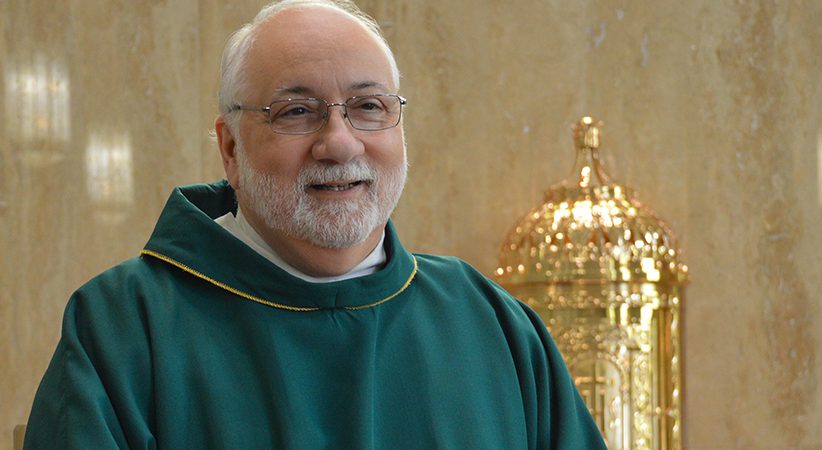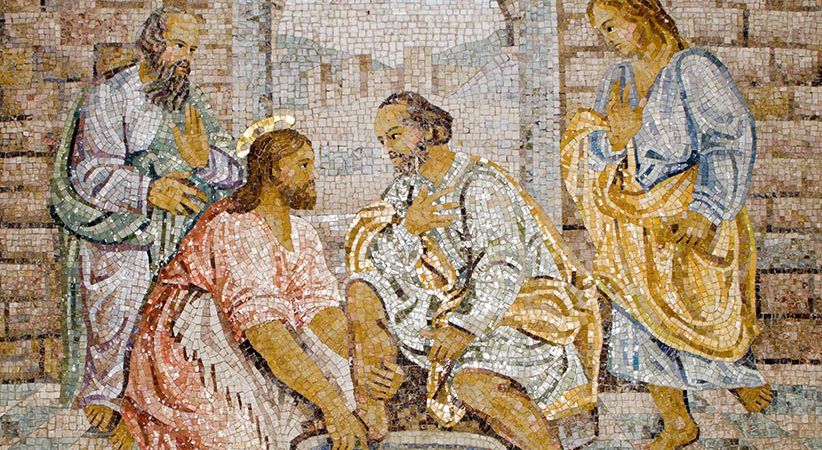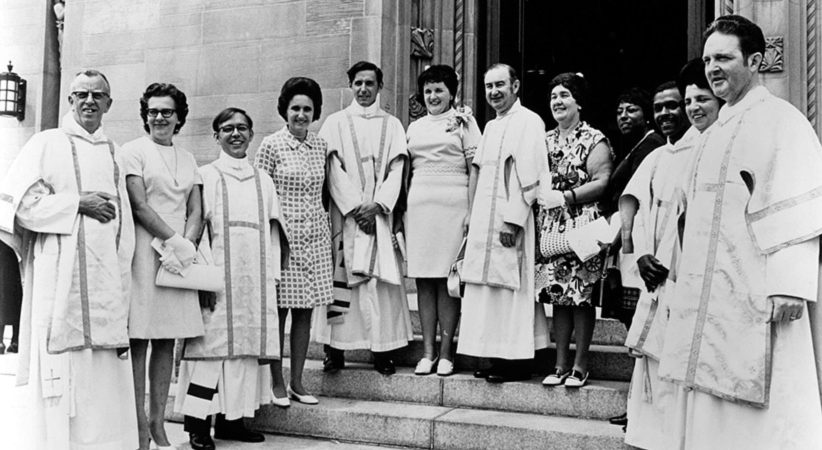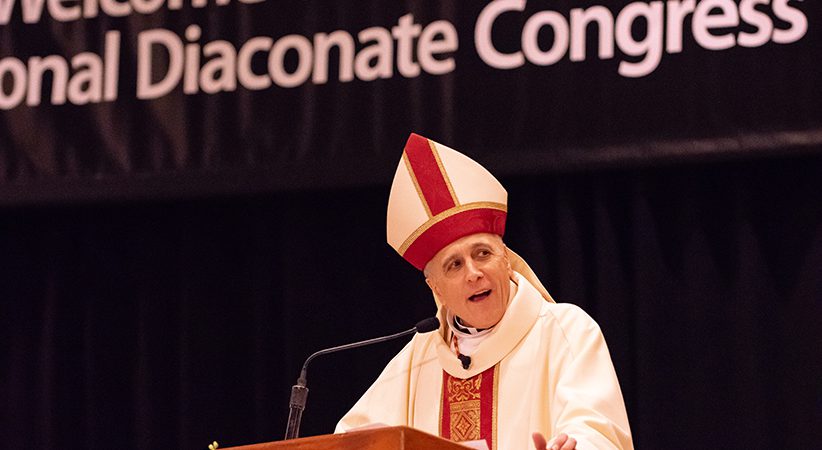Preaching to Young People
Bridging the hearts between a loving God and his people
Dr. Karla J. Bellinger Comments Off on Preaching to Young People
A few days ago, I was traveling across a bridge over an immense body of water. I marveled at the engineering that could make such a span. Those who built that bridge created it specifically for that site. They scrutinized which structural components were most fitting. They analyzed how to construct it. Their goal was to create a strong bridge, one that would link two places effectively, one that would hold up and serve its purpose for a long time.
It was 4 a.m., so my mind was still in that half-asleep, metaphorical state. I wondered, “Is preaching a bit like building a bridge?” After all, Pope Francis says that the “preacher has the wonderful but difficult task of joining loving hearts, the hearts of the Lord and his people” (Evangelii Gaudium, No. 143). Could a homilist, then, be like a theological engineer? He gathers structural components that are fitting for God’s bridge: the rich theology of the Church, the age-old Scriptures, the images of the mystics. He evaluates his particular site: the lives of his people at this time in this space. And then, through the grace of the Holy Spirit, he constructs a homiletic bridge for these people to walk across into an encounter with the living God.
Thinking about the deacons I have coached, I see that they aspire to be effective “theological engineers.” They want to build a strong bridge, one that will serve its purpose for a long time. Yet I also hear frustration that they are asked to create that span between the people and God without the training to be as effective as they would like to be.
So, just for today, lace up your boots and come with me to investigate one particular building site: the muddy banks of youth.
The World of Young People
As we trudge around in this world of youths and young adults, does it seem to you that the ground was firmer when you were young? There were stronger cultural supports for faith. There were fewer options and fewer questions. You may not have wondered, growing up, if you were male or female. When you were in trouble, someone prodded you back onto the right path. Now the ground under our feet feels almost like quicksand. Each footstep sinks a half a foot into the muck. It feels as though anxiety about life and despair about the world could suck our young people under.
How can you build a bridge to God under these circumstances? Should we abandon preaching and build from some other site, such as social media? Or does God still have confidence in the work of preaching and the live words of preachers, even to reach our youths?
From the words of young people themselves, they have been touched by homilies. One young man thanked his deacon for preaching him through a difficult time in his life. Most still believe in the potential power of liturgical preaching, even when it has been an impoverished experience. Much of the material in my book “Connecting Pulpit and Pew” (Liturgical Press, $19.95) comes from asking young people, “How do we connect with you in our Sunday preaching?” (For an in-depth analysis of “how to connect,” see chapters three and seven.) They have a lot to say. For our homiletic building project, I offer you a few of their thoughts.
Deeper, Simple and Real
Anytime the soil is unpredictable, pylons have to be dug deeper. Young people ask their preachers to “go deeper.” Deeper does not mean stringent moralizing or telling them to get off of their cellphones. Deeper means to dig beneath the surface, to find the true story of what is going on in their lives. Tie into that. A grandma is dying. A friend is contemplating suicide.
Develop sensitivity to what affects their lives (see Evangelii Gaudium, No. 155). Teenagers often feel like homilists are preaching to the grown-ups, talking over them as though they are not there. They really do want to hear you, even the sixth graders. In their darkest moments, where is the light? They often feel all on their own: Is there someone who can lift them out of the muck? Does God matter to you … and to them? In Christian faith, we believe that God is actively at work in their lives. Show them how. Show them where.
Those who do not get to build homiletic bridges often may be tempted to assemble a slick suspension span with ornate arches and include everything that you’ve always wanted to say. That doesn’t help your listeners. As you build the bridge, keep it simple. They know that you have a theological education and can use churchy words. Use everyday words. Make one path, strong, solid and easy to follow. Don’t try to do too much. Toss out the shredded tire and the broken bumper, even if they did fall from your favorite Oldsmobile. Those shiny pieces of exegetical glass — they can make the road prickly to travel. Internalize their beauty and then meld them into the substratum. Make it simple; to one point; easily and conversationally delivered. Create a clear road.
…………………………………………………………………………………………………………………………………………….
Prayer
Living God, you are the source and the goal of our lives. You surround us and you fill us. You still believe in the power of words and in preaching. Bless our homilies so that they bring our people to you.
……………………………………………………………………………………………………………………………………………
Talk real. They don’t need you to be cool. They know you’re “old.” They rated older preachers just as well as younger ones. They don’t need you to be their buddy. Talk real. Point them to Jesus. Be careful of chummy family examples; especially don’t be the hero of your own story. “Deacon is nice” is not a strong enough footing to secure the bridge in today’s world. If the bridge stops at your (conscious or unconscious) goal of “please like me,” then the bridge plunges into the water and everybody drowns. Talk real. The goal of the bridge is to help them meet the living God.
Pastoral Practice

Deacons preach because they care. The vocation of a deacon is to be a man of the marketplace; integral to that calling, you are a bridge-builder from the secular to the sacred. You have a unique perspective. Young people want to hear the Gospel afresh, not pious same-old-same-old platitudes. Build with original images and metaphors from the life you share with the people in the pew. Don’t worry about being somebody else. You are the deacon that God has called to preach at this time and in this space. Be you. The Holy Spirit is eager to connect through you, enlivening the ancient words of Scripture for your peoples’ flourishing. Thus preaching is a pastoral practice.
You and I, we have experienced the lifting power of God who brings us from darkness to light, haven’t we? We have been loved by God. We want to pass that love to others. To theologically engineer a bridge for the listener to encounter the living God — that is the highest of callings.
DR. KARLA J. BELLINGER is the associate director of the John S. Marten Program in Homiletics at the University of Notre Dame as well as a wife and mother of five young-adult children.





